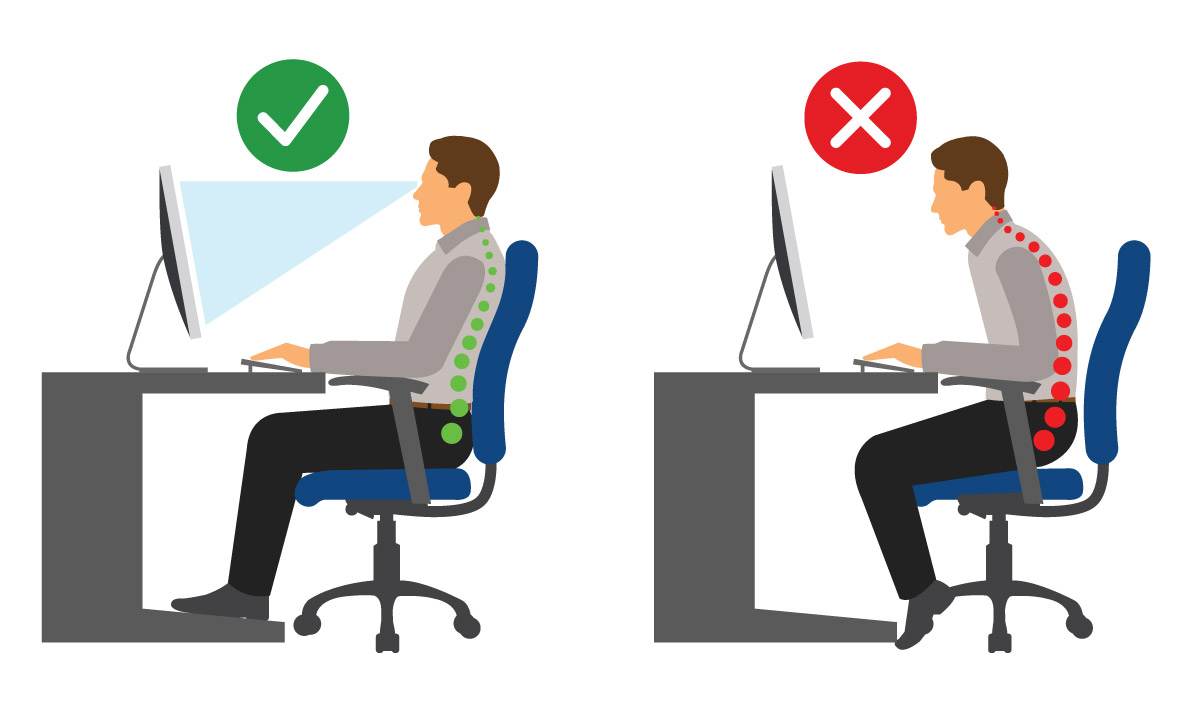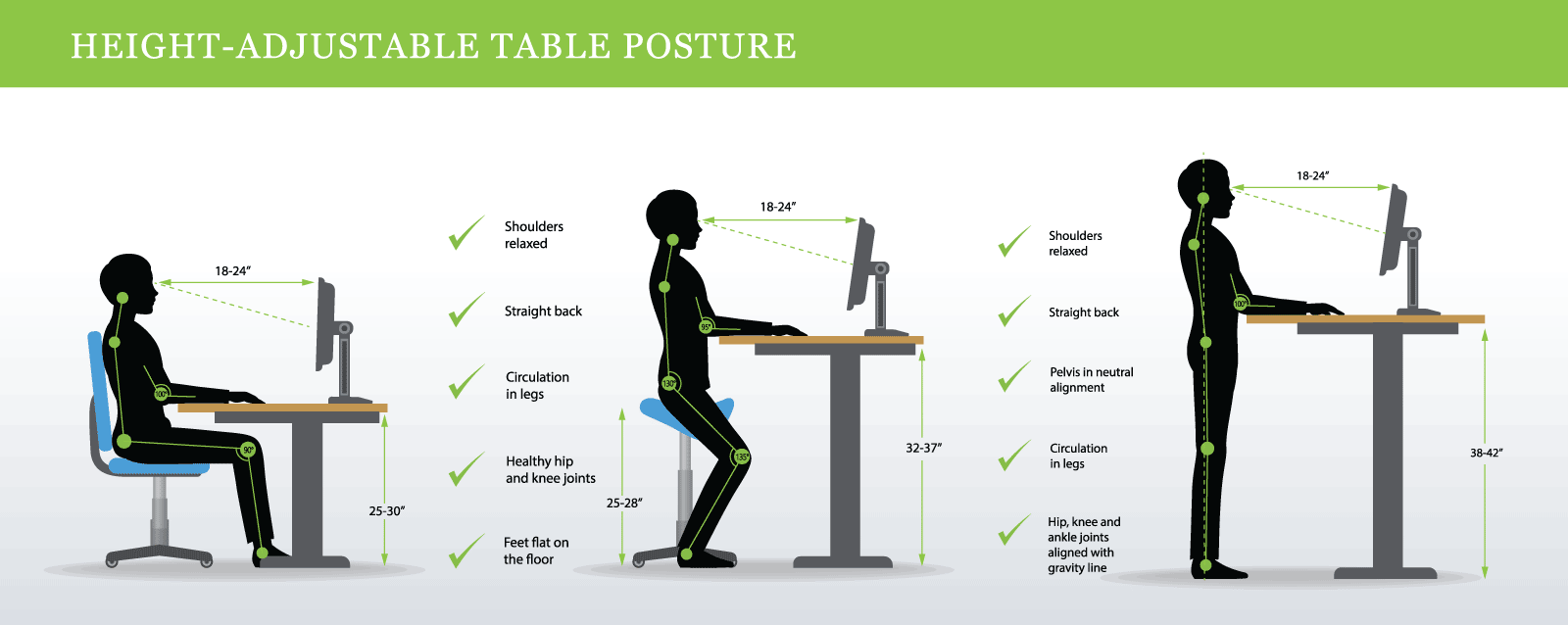Orthopedic Health Tips for Computer Workers
Doing computer work in an office (or at home) seems like a cushy gig. But spending hours per day hunched in front of a computer screen can take a toll on your orthopedic health, particularly your spine. Preventing back and neck pain is important for productivity and quality of life. Here are some tips to improve orthopedic health for people who spend hours per day working in from of a screen.

Optimize your work environment to encourage proper posture.
Hunching (or slouching) is a surefire way to have back and neck pain. We've known for a long time that proper posture can be helpful for health. Historically, good posture was associated with military discipline, not typing on your laptop. Nevertheless, it takes some discipline to improve your posture at your desk. Do your best to sit up straight with your shoulders relaxed and your feet flat on the floor. Keep your computer screen at eye level to avoid hunching over and straining your neck.
Adjust your screen position to accommodate your body.
Place your computer screen at a comfortable distance from your eyes. The ideal distance is around an arm's length away, and the top of the screen should be at eye level to avoid neck strain. If you use a laptop or tablet, then you'll probably need a stand. Shop online for “laptop stand” or “laptop riser” and you'll find a bunch of reasonably priced options. If your job requires you to travel, then it's worth investing in a stand you can take with you.
Get an adjustable chair with plenty of support.
Sitting for extended periods can lead to poor posture and joint pain. A supportive chair that helps you have good posture can reduce the risk of back and neck pain. Choose a chair with adjustable height, armrests, and a comfortable backrest. There's a huge price range for office chairs. Try the find the best option for your budget. You can order one online, or try some at an office store. If your employer has uncomfortable office chairs, then an orthopedic seat cushion with lumbar support might help.
Take breaks to stretch and walk around.
We all get busy at our desks, but taking short breaks throughout the day to stretch and move around can help relieve muscle tension and prevent joint pain. Stand up and stretch your arms, neck, and back every hour or so to keep your muscles loose and reduce stiffness.
Taking breaks is also important for reducing eye strain. Sometimes eye strain makes you unconsciously lean closer to your monitor. If you find yourself having a difficult time seeing the screen, then try changing the text size on your computer. Or it might be time to get your eyes checked by an optometrist.
Try a standing desk.
Using a standing desk or adjustable-height desk can also help alleviate back and neck pain by reducing the pressure on your spine. Standing desks can help improve posture, increase energy levels, and boost productivity. If you decide to use a standing desk, make sure to ease into it gradually and wear comfortable shoes.

In addition to improving your posture, a standup desk and can lead to lowered risk of obesity and related health problems. Sitting for long periods has been linked to an increased risk of obesity and related health problems such as heart disease, diabetes, and certain cancers. Using a standing desk can help burn more calories and reduce the risk of these conditions.
Don't ignore pain, numbness and tingling in your hand.
Typing, clicking, and moving a cursor around a screen doesn't require any heavy lifting. But the repetitive motion of using a computer can potentially lead to carpal tunnel syndrome. Carpal Tunnel Syndrome (CTS) is a medical condition caused by the compression of the median nerve in the wrist, resulting in pain, numbness, and tingling in the hand and fingers. CTS can also cause weakness in the hand and loss of grip strength. Repetitive hand motions, wrist injuries, hormonal changes, and certain medical conditions increase the risk of developing CTS. Treatment typically involves rest, wrist splinting, and in some cases, surgery.
Are you experiencing back, neck, or hand pain?
If you've implemented these tips, but are still suffering back and neck pain, or numbness and tingling in your hand, you should reach out to us. The doctors and physical therapists at The Centers for Advanced Orthopaedics are here to help. Schedule an appointment today!

